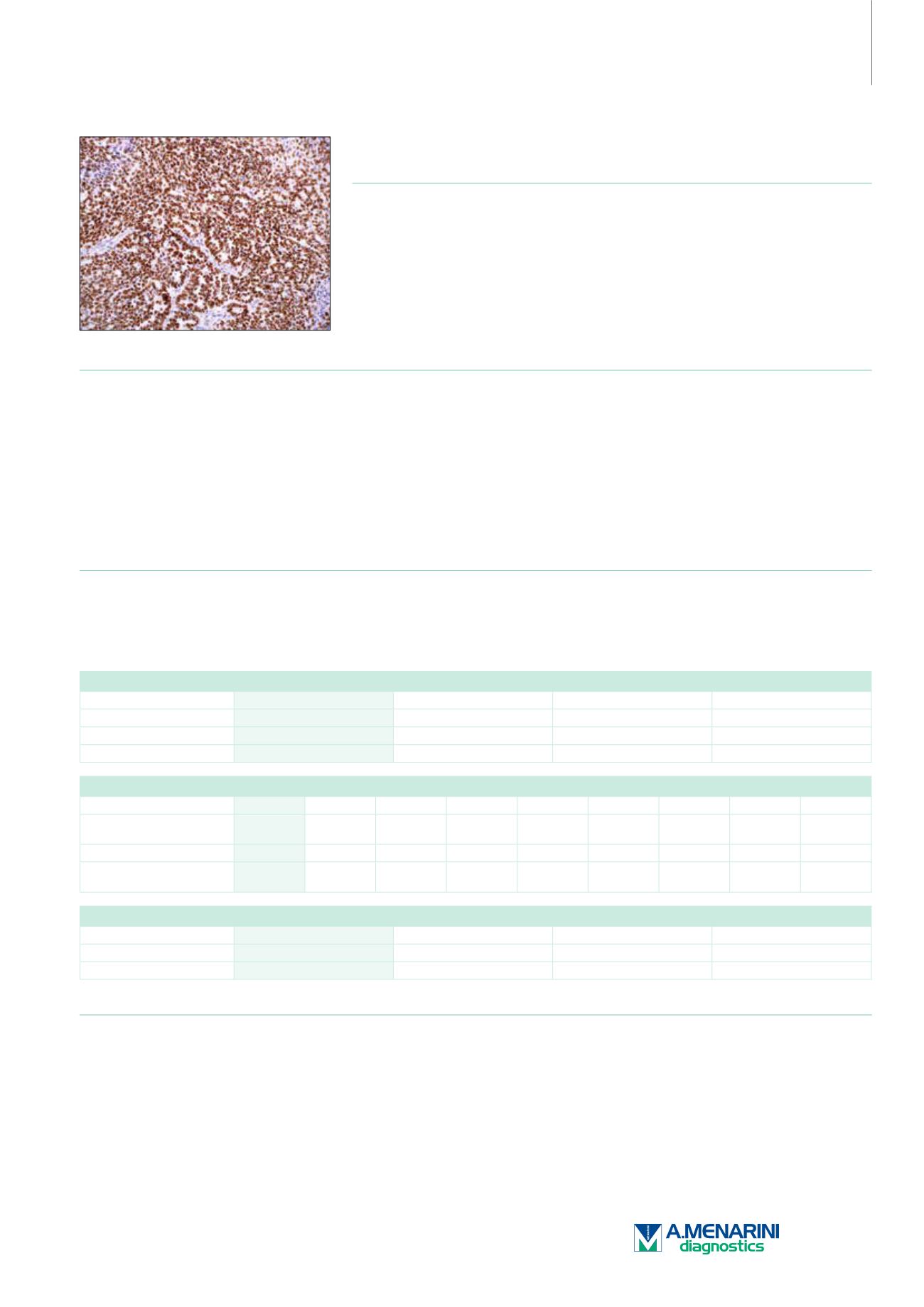
Advanced Solutions
for Advanced Pathology
p53 (DO7)
Mouse Monoclonal Antibody
Cat. No. Description
Volume
45154 IMPATH p53 RTU M (DO7)
50 Tests
44361 p53 RTU M (DO7)
7 ml Ready To Use
44742 p53 0,1 M (DO7)
100 µl liquid Concentrated
44743 p53 1 M (DO7)
1 ml liquid Concentrated
Product Specifications
Designation
IVD
Reactivity
Paraffin
Visualization
Nuclear
Control
Breast Carcinoma, Colon Carcinoma
Stability
Up to 36 mo. at 2-8°C
Isotype
IgG
2b
/k
Manual Protocol*
• Pretreatment: Heat Induced Epitope
Retrieval (HIER)
• Primary Antibody Incubation Time:
10-30min @ 25-37°C
• 2-step polymer detection
*Please refer to product insert for complete protocol.
ImPath Protocol*
• Dewax: Dewax Solution 2 (DS2)
• Pretreatment: Retrieval Solution pH 9.0
(TR1) 32min @ 98-103°C
• Primary Antibody Incubation Time:
10-90min @ 25-37°C
• HRP Polymer (Universal) or AP Polymer
(Universal) for 12 min
*Please refer to product insert for complete protocol.
Product Description
Anti-p53 tumor suppressor protein recognizes a 53 kDa phosphoprotein, identified as a p53 suppressor gene product. It reacts with the mutant
as well as wild form of p53. Positive nuclear staining with this antibody has been shown to be a negative prognostic factor in breast carcinoma,
lung carcinoma, colorectal, and urothelial carcinoma. Anti-p53 positivity has also been used to differentiate uterine serous carcinoma from
endometrioid carcinoma as well as to detect intratubular germ cell neoplasia.
Bladder: Dysplasia vs. Reactive
p53
CK 20
CD44
Ki-67
Carcinoma
in-situ
+
+
-
+
Reactive Atypia
-
-
+ (all cell layers)
+
Normal Urothelium
-
+ (umbrella cells)
+ (umbrella cells)
-
Liver: Malignant vs. Benign
p53
Hep-Par1 Glypican-3 CD34
AFP
A1AT
pCEA
mCEA
TTF-1
Hepatocellular Carcinoma
+
+
+
+
-/+
-/+
+
-
+
(cytoplasmic)
Hepatoblastoma
+
+
+
-
+
+
+
-
-
Benign Liver Nodules
-
+
-
-
-
+/-
-
-
+
(cytoplasmic)
Mesothelial Cells: Malignant vs. Benign
p53
GLUT1
Mesothelin
Calretinin
Malignant
+
+
+
+
Reactive Benign
-
-
+
+
Reference
1. Moore BE, et al. Applied Immunohistochemistry and Molecular Morphology. 2001; 9(3):203 –206.
2. Mauri FA, et al. Int J Oncol. 1999 Dec; 15(6):1137-47.
3. Caffo O, et al. Clin Cancer Res. 1996 Sep; 2(9):1591-9.
4. Bebenek M, et al. Anticancer Res. 1998 Jan-Feb; 18(1B):619-23.
5. Midulla C, et al. Anticancer Res. 1999 Sep-Oct; 19(5B):4033-7.
189


